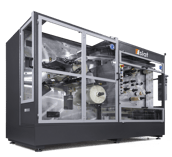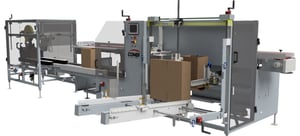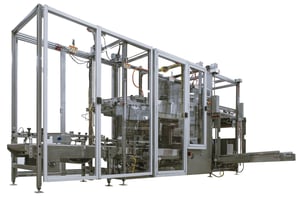Whether you’re replacing an old case sealer, adding robotics or implementing a fully automated high-capacity packaging line, every implementation is unique.
But here are four common questions that need to be addressed at the outset of any end-of-line packaging project.
1. Who are all of the stakeholders, and what motivates each of them?
This question is sure to come up early in conversation with any equipment vendor. It can be misunderstood as a way to get past an initial gatekeeper.
But it’s more than that, according to Shawn Beatty, VP of Sales at Combi Packaging Systems. “There’s always more than one person who has a stake in a project,” he says. “If I’m talking to the person responsible for maintenance, obviously he wants things to run fast and hard with the least downtime. If I’m talking to top management, they may want to reduce labor or achieve a fast return on investment. Those are very different ways to think about a project, and taken alone, they might result in different solutions. So we need to understand the whole audience—not just the project leader.”
2. What are the real issues you need to solve?
“People don’t buy capital equipment because they need to put product into boxes; one way or another, they’re already doing that,” Beatty says. “So there must be something they want to change about the way they’re erecting cases or packing them or stabilizing them on pallets for shipping. Do they need to do it faster? Do they need to do it with less labor? Do they need to reclaim floor space or speed up changeovers…?”
The answer is often a combination of requirements, and figuring it out can take some digging. Sometimes the client has been living with a certain issue for so long they don’t even see it as a problem to be solved. Or they don’t know the full range of options that might be used to address a mix of needs.
“We’re the industry experts,” Beatty says. “We spend every day working out solutions to complex sets of requirements, and we’ll start by asking a lot of questions. If you’ve already been thinking about it, you’re that much ahead of the game.”
3. What level of automation do you have, and how much more can you handle?
Sometimes, organizations are overconfident in their ability to handle complex automation.
“I’ve seen companies get into highly automated projects that promise to fill twice as many cases in half the time. But then they try to run 10 products on the same line, and they give back all the time savings in changeovers and adjustments,” Beatty says. “They might have spent less money and gotten more throughput by retaining a little bit of labor in the setup.”
Beatty emphasizes this is usually a function of company size. Large companies tend to run fewer products in higher volumes on any given packaging line. “Those are the operations that are going to do really well with 24/7 lights-out mindset, because they set up a line to run one product, and then they basically turn it on and let it run for the next 10 years.”
Automation can be just as meaningful for smaller companies, but it tends to support a different set of needs – smaller runs for a variety of products – and the solutions look different.
“We want to help customers to walk before they run,” Beatty says. “I can go out and buy the fastest street-racing car of all time—and there’s a good chance I’m going to run it off the road because I don’t know how to handle 150 mph. Automation is similar that way.”
4. Do you need a piece of machinery or an integrated system?
Just as there may be multiple issues to address, the solution may involve more than one piece of equipment. Understanding the full range of what the provider offers can change the way you approach a project.
“This may be a unique challenge for Combi, because we have a broad view of our job and such a wide range of capabilities—everything from case erectors to palletizing and load containment. A lot of companies specialize in a single type of equipment, and that’s what customers have been conditioned to expect,” Beatty says. “They go to one place for a case erector and somewhere else for a case packer.”
But Combi builds equipment for every aspect of end-of-line packaging, and designs them to integrate with each so products flow smoothly from beginning to end. “And if you are having trouble, you only have one call to make because we can service the entire line,” Beatty says.
Are you planning improvements for your end-of-line packaging operations? Contact Combi Packaging Systems to see what creative packaging solutions we have to offer.







.png?width=161&name=ProWrap%20(1).png)


